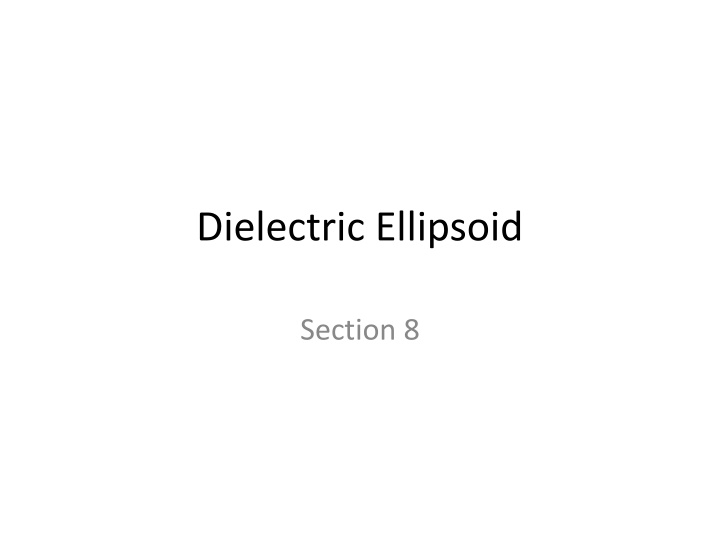
Dielectric Ellipsoids and Spherical Polarization
Dive into classic undergrad problems like polarization of conducting and dielectric spheres, solving Laplace's equation in spherical coordinates, and exploring boundary conditions for dielectric materials. Visualize the solutions and concepts to enhance your understanding in electromagnetism.
Download Presentation

Please find below an Image/Link to download the presentation.
The content on the website is provided AS IS for your information and personal use only. It may not be sold, licensed, or shared on other websites without obtaining consent from the author. If you encounter any issues during the download, it is possible that the publisher has removed the file from their server.
You are allowed to download the files provided on this website for personal or commercial use, subject to the condition that they are used lawfully. All files are the property of their respective owners.
The content on the website is provided AS IS for your information and personal use only. It may not be sold, licensed, or shared on other websites without obtaining consent from the author.
E N D
Presentation Transcript
Dielectric Ellipsoid Section 8
1. Polarization of a conducting sphere in an external field was solved in Landau Problem 3.1. It is a classic undergrad problem that everyone must know. Polarization of a dielectric sphere is another classic undergrad problem to know. E=0
2. Dielectric sphere in a uniform external electric field Field that would be without the sphere Put the origin at the center of the sphere. Potential of uniform external field Change in potential caused by sphere Potential outside the sphere Same as the solution outside the conducting sphere (LL Problem 3.1), but constant A will be different due to different boundary conditions
Solution of Laplaces Equation in spherical coordinates is of the form There is no dependence on the azimuthal angle by symmetry Blows up at infinity. Set a = 0. The l= 0 term (const/r) doesn t have the symmetry of the constant vector , the only parameter of the problem. The l = 1 term is the first non-zero term.
3. Inside the sphere, the solution must be finite at the origin. Set b = 0. The l = 0 term is just a constant. Ignore. The l = 1 term is arCos (i) = -B E E0.r Field inside = B E E0 , i.e. uniform
4. First boundary condition on potential is that it is continuous at boundary between two dielectrics. There is still the undeterimined constant A to find. We need one more boundary condition.
Second boundary condition is continuity of normal component of induction
For a dielectric sphere in a uniform applied external field, the internal field is uniform The sketch is for E(e) is similar to that of a conducting sphere in a uniform field.
Conducting sphere Dielectric sphere ( (e) = 1)
